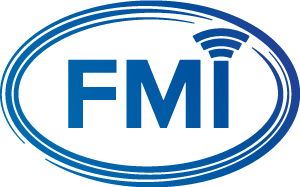Technology Comparison
Cameras & AI
Simple camera based systems for Collision Avoidance in Materials Handling Applications have been on the market for years. Historically, they have been limited in function due to the complexity of industrial environments – also they have been prone to unreliable performance. The addition of AI to the market has allowed for additional computing, but the available input signals used as the basis for the computing algorithms have not changed.
Camera technology, with or without AI, is unable to work through obstructions and blind corners that are common in warehouses and manufacturing facilities.
Cameras provide images and recordings of near misses. They can also identify (in many conditions, and with properly trained AI) – signs, pedestrians, and other vehicles for collision avoidance as long as they are within their Field of View (FoV). The primary marketed feature of camera technology is pedestrian avoidance with no wearable.
When choosing the appropriate warehouse safety solution – the many considerations should be addressed, including – should the pedestrian be individually alerted when they are in close proximity equipment – allowing them to respond as well, should the coverage be 360 degrees around the equipment, should the solution work through obstructions or forklift loads, how common should nuisance alerts be provided? What if I need to work near a forklift, behind a barrier – how do I prevent alerts?
HIT-NOT’s patented magnetic field technology has decades of history working in hundreds of facilities and many industries, globally addressing all of the above considerations.
Take a look at the chart below for additional features of HIT-NOT:
HIT-NOT® maintains the corporate strategy of maintaining component compatible across all product offerings, allowing for adoption of more features at a later time. The range of all components are adjustable to meet the demands of your application.

